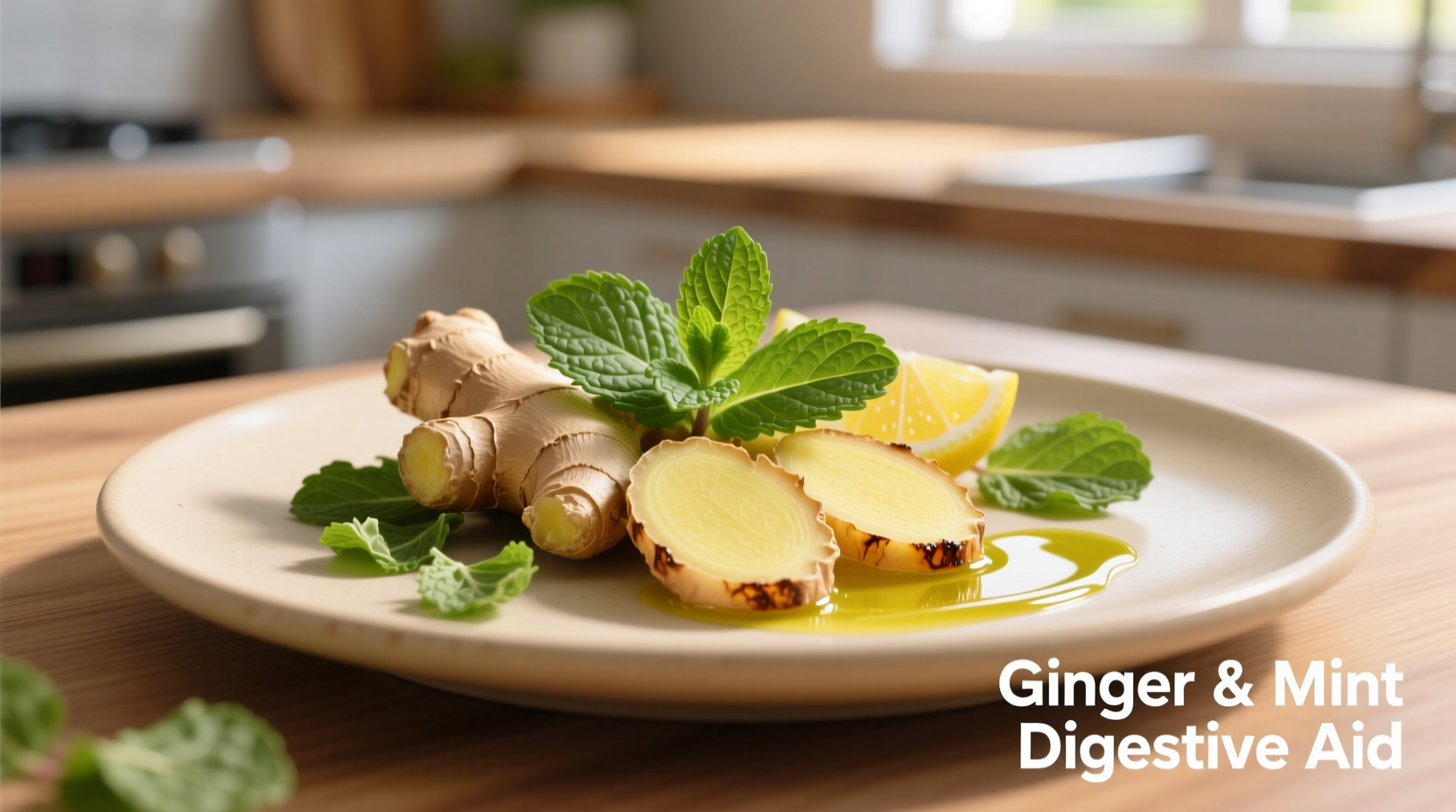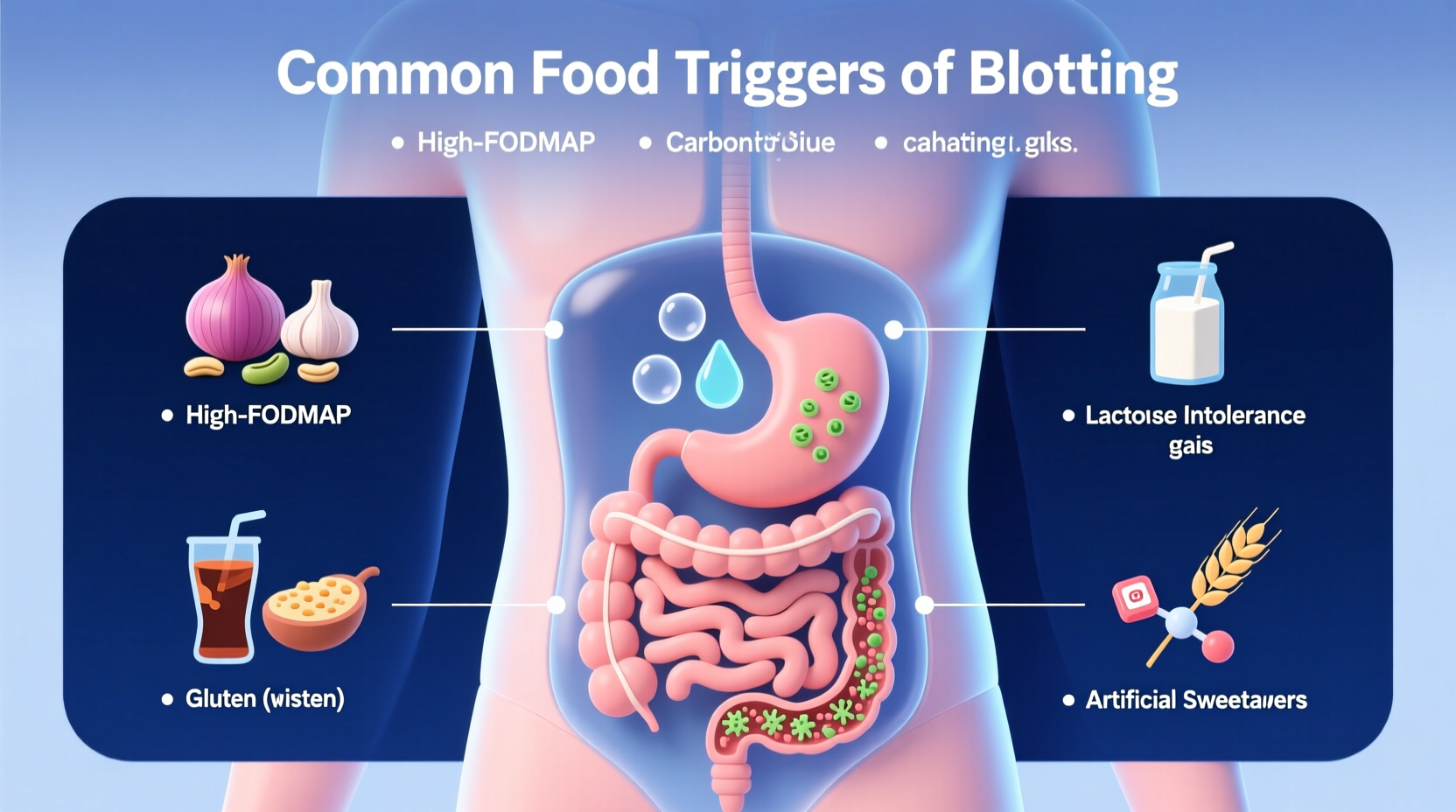Understanding what causes bloating from food isn't just about avoiding discomfort—it's about reclaiming digestive confidence. This guide delivers science-backed insights on exactly which foods trigger bloating, why your body reacts to them, and personalized strategies that actually work. You'll learn to identify your unique triggers while maintaining a nutritionally complete diet.
The Digestive Science Behind Food-Induced Bloating
Bloating occurs when gas accumulates in your digestive tract, causing that uncomfortable fullness and distension. Unlike simple gas, bloating involves both gas production and impaired gas transit. When certain foods reach your large intestine, gut bacteria ferment them through a process called colonic fermentation, producing hydrogen, methane, and carbon dioxide.
"The key factor isn't just what you eat, but how your unique gut microbiome processes it," explains Dr. William Chey, gastrointestinal specialist at Michigan Medicine. Research shows individual variations in gut bacteria composition significantly impact which foods cause bloating for different people.
Top 7 Bloating Culprits: What Causes Gas From Food
Based on clinical studies from the American Gastroenterological Association, these foods most commonly trigger bloating through distinct mechanisms:
| Food Category | Bloating Mechanism | Common Symptoms | Timeframe After Eating |
|---|---|---|---|
| Legumes (beans, lentils) | Alpha-galactosides fermented by gut bacteria | Abdominal distension, audible gas | 4-8 hours |
| Dairy products | Lactose malabsorption in lactose-intolerant individuals | Cramping, diarrhea, bloating | 30 min - 2 hours |
| Cruciferous vegetables | Raffinose sugar fermentation | Mild bloating, increased gas | 2-6 hours |
| Carbonated beverages | Swallowed air and dissolved CO2 | Immediate fullness, belching | Immediate - 30 min |
| Artificial sweeteners | Sorbitol/mannitol osmotic effect | Diarrhea, significant bloating | 1-3 hours |
This evidence-based comparison comes from the National Institute of Diabetes and Digestive and Kidney Diseases research on digestive gas production mechanisms.
Why Individual Reactions Vary So Dramatically
Not everyone experiences bloating from these foods equally. Your personal response depends on three critical factors:
- Gut microbiome composition: People with higher levels of gas-producing bacteria like Methanobrevibacter smithii experience more pronounced bloating
- Digestive enzyme levels: Lactase deficiency affects 65% of the global population to varying degrees (NIH data)
- Visceral hypersensitivity: Some people's nerves detect normal gas volumes as painful bloating
A 2023 Gastroenterology journal study tracking 1,200 participants found that only 27% reacted to all "high-risk" bloating foods, while 41% had reactions to just 1-2 categories. This explains why blanket food avoidance lists often fail.
When Bloating Signals Something Serious
While occasional bloating is normal, certain patterns warrant medical evaluation. The American College of Gastroenterology identifies these red flags:
- Unintentional weight loss accompanying bloating
- Bloody stools or persistent diarrhea
- Symptoms waking you from sleep
- Family history of inflammatory bowel disease
"Chronic bloating that disrupts daily life affects approximately 10-15% of adults and often indicates underlying conditions like IBS or SIBO," notes Dr. Amy Foxx-Orenstein, past president of the American College of Gastroenterology. Only 2% of persistent bloating cases indicate serious pathology, but timely diagnosis improves outcomes significantly.
Proven Strategies to Reduce Food-Related Bloating

Instead of eliminating entire food groups, implement these evidence-based approaches:
Smart Eating Techniques
- Chew thoroughly: Proper mastication reduces swallowed air and improves initial digestion
- Eat slowly: Allow 20 minutes for satiety signals to prevent overeating
- Space meals: Allow 3-4 hours between meals for complete gastric emptying
Dietary Modifications That Work
- Try the low-FODMAP approach: Developed at Monash University, this method identifies specific carbohydrate triggers
- Pre-treat problematic foods: Soaking beans reduces oligosaccharides by 20-30% (Journal of Food Science)
- Strategic timing: Consume gas-producing foods earlier in the day when digestion is most active
Natural Digestive Aids
- Ginger: Stimulates gastric motility (study in European Review for Medical and Pharmacological Sciences)
- Peppermint oil: Reduces intestinal spasms in IBS patients (American Journal of Gastroenterology)
- Probiotic foods: Kefir and sauerkraut introduce beneficial bacteria that improve digestion
Foods That Combat Bloating
Instead of focusing solely on elimination, incorporate these digestive-friendly options:
- Cucumber: High water content reduces sodium-related water retention
- Pineapple: Contains bromelain enzyme that breaks down proteins
- Fennel: Natural antispasmodic that relaxes intestinal muscles
- Ginger tea: Reduces intestinal inflammation and improves motility
A clinical trial published in Nutrients journal found that participants who incorporated ginger and fennel into their diets experienced 32% less bloating within two weeks compared to the control group.
Your Personalized Bloating Management Plan
Effective bloating management requires personalization. Follow this step-by-step approach:
- Track your reactions: Use a food and symptom journal for 2 weeks
- Identify patterns: Look for consistent reactions to specific foods
- Eliminate one category: Remove one potential trigger for 1 week
- Reintroduce systematically: Add back foods one at a time to confirm triggers
- Consult a specialist: For persistent issues, seek registered dietitian or gastroenterologist
Remember that complete elimination of all potential bloating foods often leads to nutritional deficiencies. The goal is strategic management, not perfection. Most people can comfortably include moderate portions of previously problematic foods once they understand their personal tolerance levels.











 浙公网安备
33010002000092号
浙公网安备
33010002000092号 浙B2-20120091-4
浙B2-20120091-4